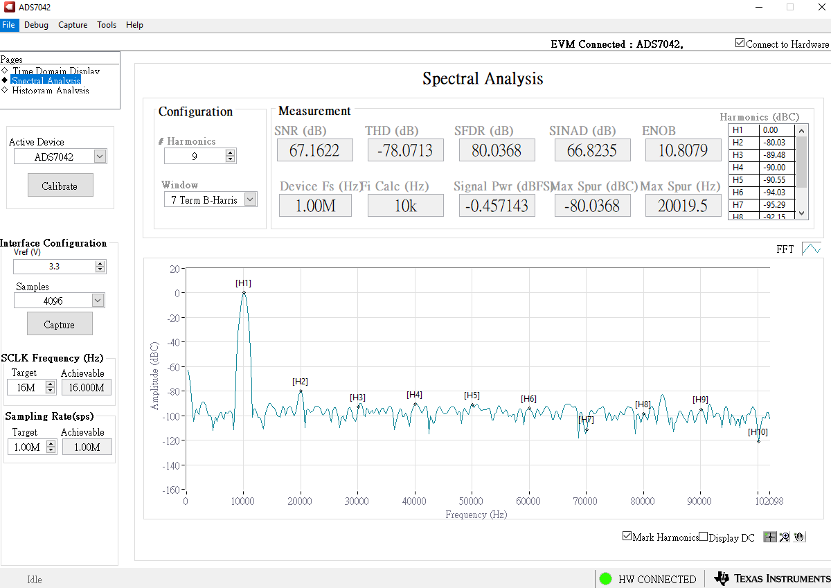Dear Sir,
I’m work to verify the ADS7042 performance and check the SNR and THD result by raw data (sample 4096).
I have 2 questions which need to be support.
- Can anyone please help to explain how TI definition the SNR and THD, and how to calculate it?
I cannot verify result from Python to TI GUI.
- In GUI calculation, SNR is very closed in 4096, 8192 and 65536 different samples.
Considering the process gain, the SNR should be better when samples be larger, is that correct?
or TI had other digital filter process in GUI calculation?
The detail of question 1 is as below:
Input 10KHz Vpp=1.62V sinewave, I get the result in GUI tool.
And export raw data and try to verify result by python.

But I cannot get the same SNR/THD value as GUI tool.
I try to ask the code to community (Stack overflow).
https://stackoverflow.com/questions/76099845/snr-calculation-by-python-verified-code-by-ti-ads7042-evm/76100036#76100036
"Calculating SNR is usually a bit arbitrary thing to do. It depends on the signals you are measuring.
If you want to have 1-to-1 correspondence you could ask Texas Instruments how they calculate it. Maybe this is not a secret."
They suggest me to seeking support from TI for getting correct definition and calculation of SNR and THD.
Thanks

